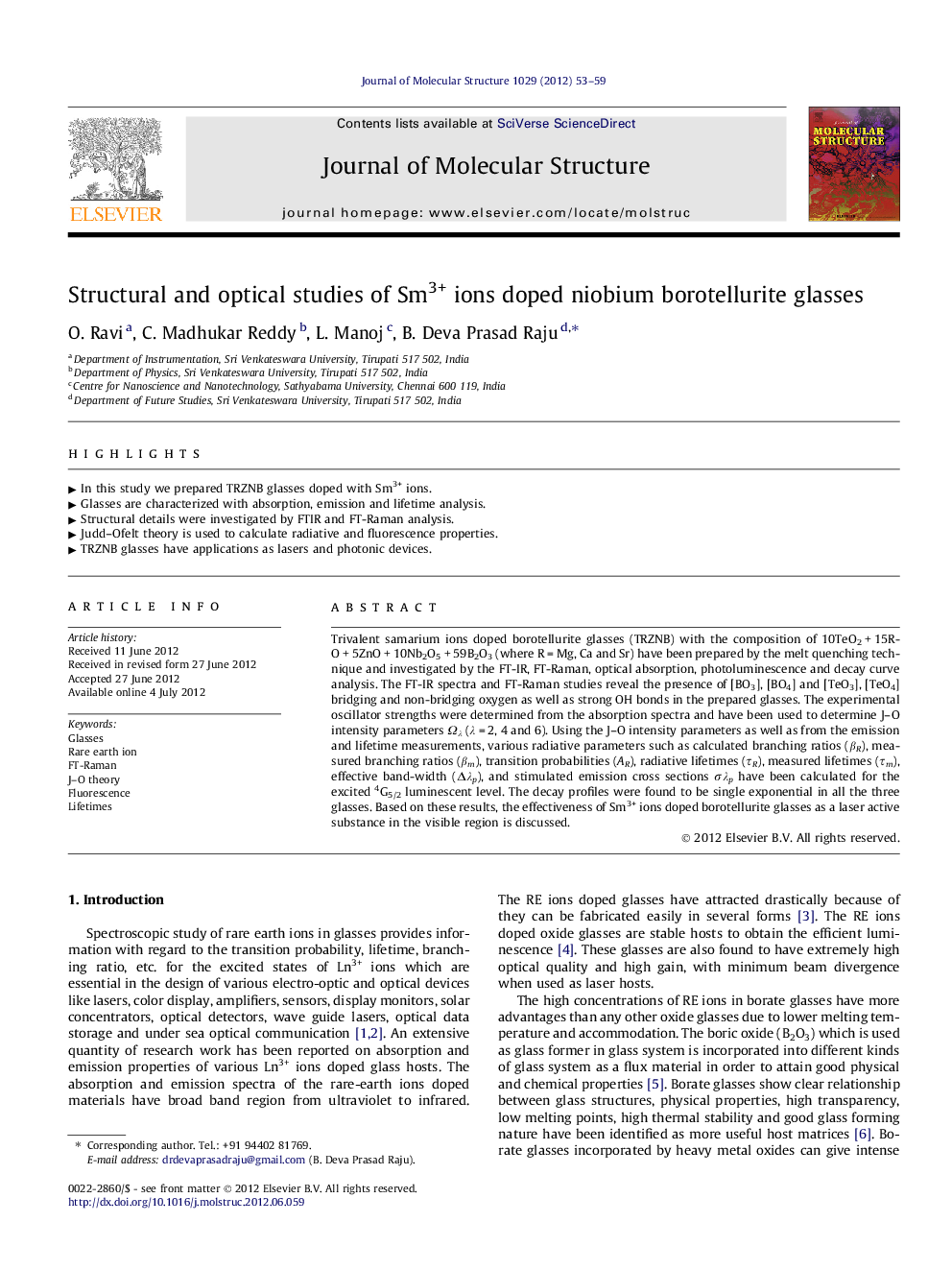| Article ID | Journal | Published Year | Pages | File Type |
|---|---|---|---|---|
| 1408954 | Journal of Molecular Structure | 2012 | 7 Pages |
Trivalent samarium ions doped borotellurite glasses (TRZNB) with the composition of 10TeO2 + 15RO + 5ZnO + 10Nb2O5 + 59B2O3 (where R = Mg, Ca and Sr) have been prepared by the melt quenching technique and investigated by the FT-IR, FT-Raman, optical absorption, photoluminescence and decay curve analysis. The FT-IR spectra and FT-Raman studies reveal the presence of [BO3], [BO4] and [TeO3], [TeO4] bridging and non-bridging oxygen as well as strong OH bonds in the prepared glasses. The experimental oscillator strengths were determined from the absorption spectra and have been used to determine J–O intensity parameters Ωλ (λ = 2, 4 and 6). Using the J–O intensity parameters as well as from the emission and lifetime measurements, various radiative parameters such as calculated branching ratios (βR), measured branching ratios (βm), transition probabilities (AR), radiative lifetimes (τR), measured lifetimes (τm), effective band-width (Δλp), and stimulated emission cross sections σλp have been calculated for the excited 4G5/2 luminescent level. The decay profiles were found to be single exponential in all the three glasses. Based on these results, the effectiveness of Sm3+ ions doped borotellurite glasses as a laser active substance in the visible region is discussed.
► In this study we prepared TRZNB glasses doped with Sm3+ ions. ► Glasses are characterized with absorption, emission and lifetime analysis. ► Structural details were investigated by FTIR and FT-Raman analysis. ► Judd–Ofelt theory is used to calculate radiative and fluorescence properties. ► TRZNB glasses have applications as lasers and photonic devices.
